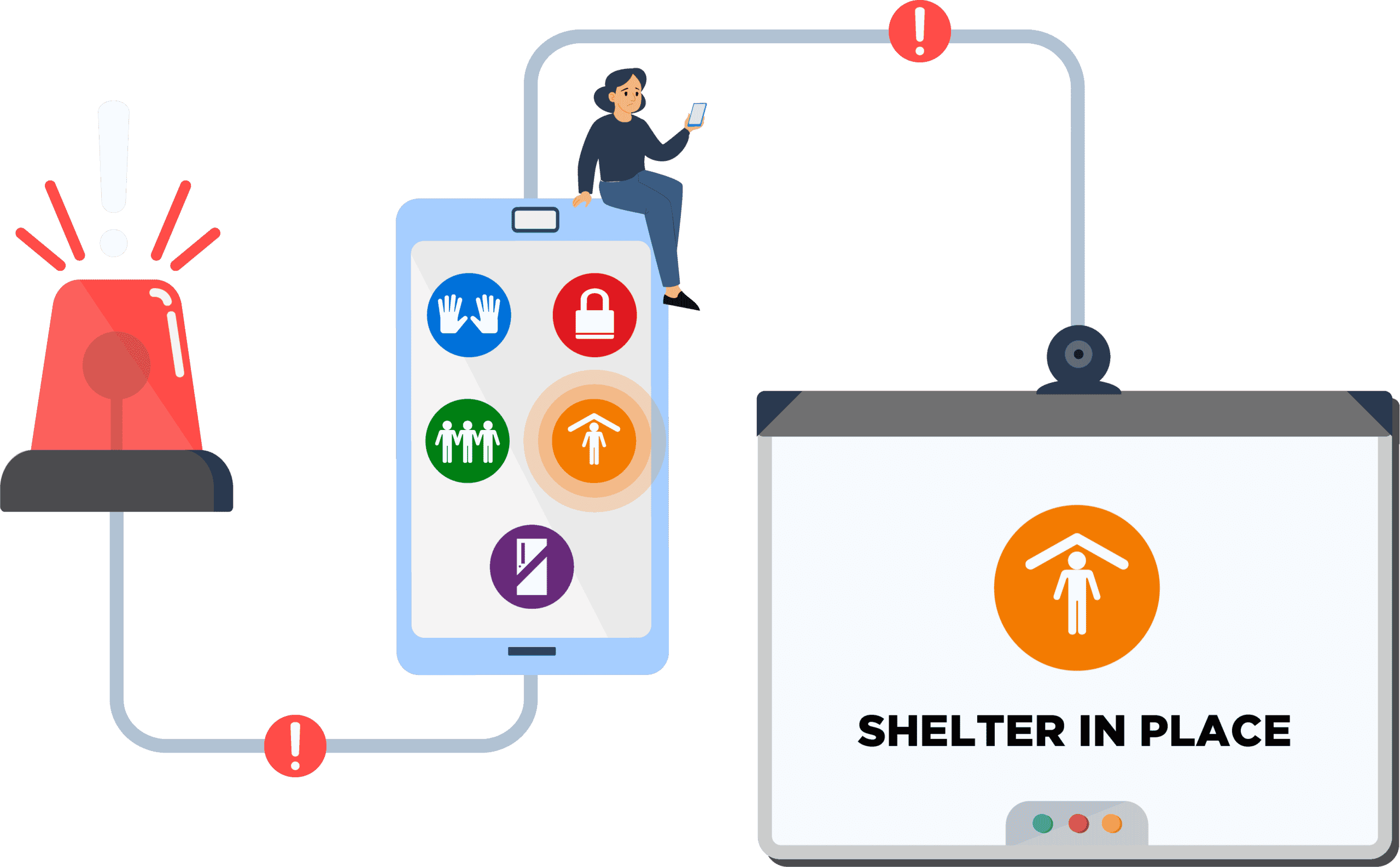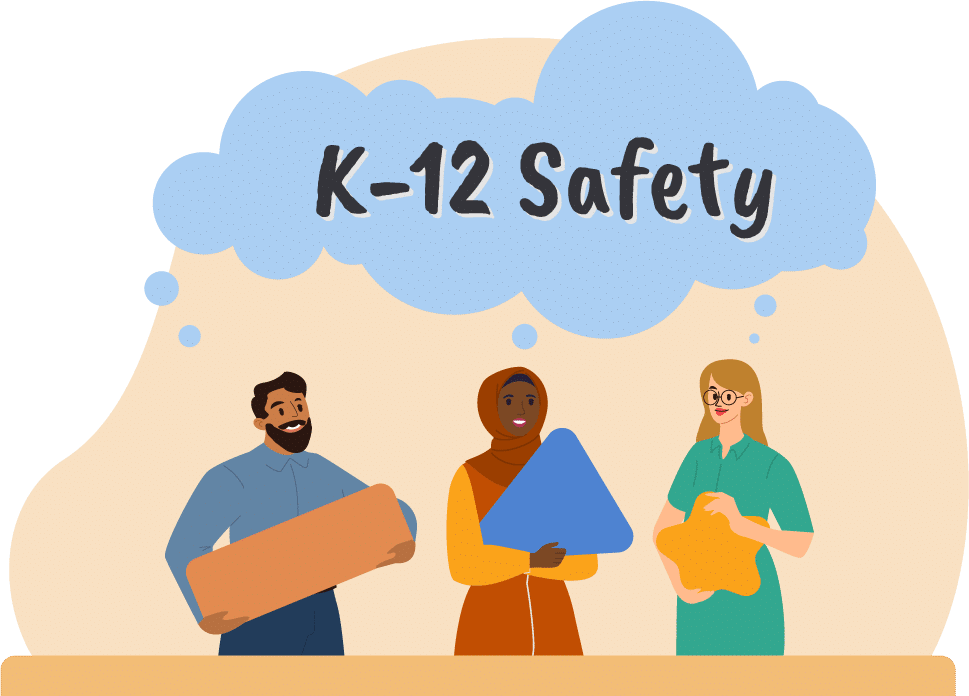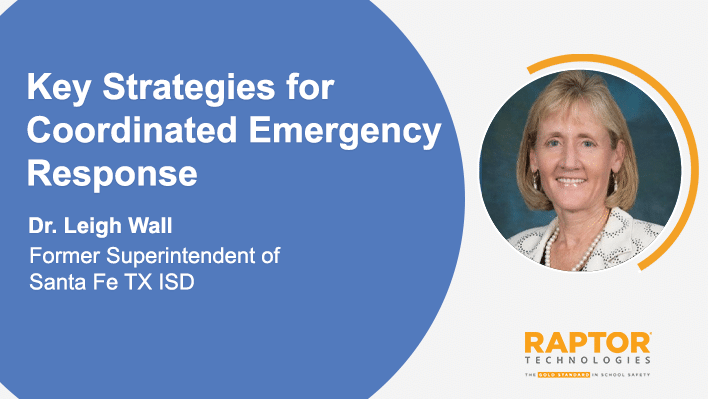We Cannot Afford Even One Second of Delayed Response
Past school tragedies are heartbreaking reminders of how time equals life, and that we cannot afford even one second of delayed or inaccurate correspondence with dispatchers and responders. Although our focus is to prevent another unthinkable tragedy, schools must be proactive and prepared for emergencies.

“Making it as simple as possible for staff in the schools and for the students to follow emergency protocols makes Raptor very effective. That has been a huge help for us just getting that common message across of what to do in the event of an emergency.”
-Nick Lucas, Craven County ISD Director of Safety and Security
“Making it as simple as possible for staff in the schools and for the students to follow emergency protocols makes Raptor very effective. That has been a huge help for us just getting that common message across of what to do in the event of an emergency.” -Nick Lucas, Craven County ISD Director of Safety and Security
-Nick Lucas, Craven County ISD Director of Safety and Security
1
Expedite Awareness with a Mobile Panic Button
Successful response—and the number of lives saved—depends on how fast first responders receive accurate, specific information about the emergency. Best practice is for teachers and staff to have a mobile panic button that they can initiate from wherever they are on campus.

Ask for Help Fast
The most powerful panic button systems are customized to your emergency response protocols and enable users to directly call or text 9-1-1 and automatically share critical details, such as caller name and precise location on campus, with dispatchers. The system should be customized to the school’s emergency response protocols and allow staff, first responders, and incident commanders to communicate through group messaging and access your emergency operations plan. Systems with geolocation capabilities allow users to switch between campuses without having to worry about updating settings.
TIP: Practice Response with Drills
We cannot predict emergencies, but the more your school community is trained to respond, the less chaotic, and therefore the more successful, your emergency response will be. Click here to read best practices for school safety drills.
Effortlessly Connect Your School Safety Devices and Systems
Many schools have independent safety solutions that require separate activation. This disjointed process wastes valuable time and ultimately impedes response and recovery. Imagine if your school emergency management system, cameras, alarms, IoT devices, smart boards, and other peripherals could talk to one another.
What if your school safety devices and systems could talk to one another? Imagine having reliable, innovative technology that:
- Instantly activates the appropriate emergency response (Lockdown, Evacuate, Secure, etc.) when it receives signals from your other devices
- Immediately notifies school staff and first responders while also activating your alarm systems, IoT devices, and access control systems
- Sends information to smart boards and other connected digital response technologies
- Streamlines your digital emergency response activations, speeding notifications and minimizing the impact of the situation
FEATURED RESOURCE
2
Automatically Share Details with First Responders
Time and communication are critical when responding to a school emergency. “The amount of resources that will come to aide in a school emergency is almost incomprehensible,” Chrissie Coon, Chief Experience Officer, Mutualink, says. “Bringing some sort of clarity and coordination among the agencies can be a challenge because they’re all on their own propriety systems and are operating in some sort of a silo.”

Automatically Share Details with 9-1-1
Your panic button system should be RapidSOS Ready to deliver critical, real-time data to a Public Safety Answering Point (PSAP). This automatically connects the caller to 9-1-1 and instantly shares additional information with the dispatcher, including:
- Caller Name and Information (e.g. job role)
- Dispatchable Address
- Callback Number
- School Name and Precise On-Campus Details (e.g. building name)
- Real-Time Status of the Emergency
- Type of Emergency (e.g. lockdown)
TIP:
When first responders have immediate access to your school floorplans and maps, they won’t have to stop and ask for directions. Instead, they can just go exactly where they are needed. It is also critical that buildings and doors are labeled.
If a first responder is unfamiliar with your campus, they must have detailed school maps to know how to navigate the hallways. These maps should be available in your panic button system and combine floor plans, high-resolution imagery, and a gridded overlay. Having detailed maps like these (such as the ones created by Critical Response Group) will reduce response time and ultimately save lives.
FEATURED RESOURCE
Podcast: Navigating School Safety and Emergencies
Retired Chief of Police and District Security for Palm Beach County School District, Frank Kitzerow talks about the importance of planning, communication and technology. Listen Now.
3
Account for Everyone on Campus

FEATURED RESOURCE
Webinar
Former Santa Fe Superintendent Dr. Leigh Wall shares lessons learned from the tragedy at Santa Fe High School.
Watch Now.
Make Sure Everyone is Safe
4
Respond to Everyday Incidents

Everyday situations can quickly escalate without the presence of the appropriate personnel to identify and resolve the issue. Here are eight incidents most likely to occur in schools:
- Medical incidents such as an allergic reaction or injury
- Fights between students in common spaces
- Suspicious activity like an unknown person on campus
- Spills/flooding due to a plumbing or cafeteria accident
- Disruptive activity, for example from an irate parent
- Foul odor that may be a mistake in the lab or a prank
- Vandalism such as graffiti or property damage
- Other personal incidents requiring an administrator
FEATURED RESOURCE
This white paper shares strategies for how schools can prepare for and address this increased violence and keep everyone safe.
Download Now
5
Create a School Safety Ecosystem

When thinking about what technology to include, Chief Kitzerow recommends schools start with an assessment.
“It’s never a one size fits all. Take inventory of what you have now, what’s working for you, and if you are using [the technology] to the best of its ability.” Consider if you are truly prepared for violent attacks, and whether you have the resources to save the lives of everyone on campus. Law enforcement can help schools evaluate and purchase safety equipment and technology.
FEATURED RESOURCE
Addressing your complex school safety needs does not have to be daunting. You don’t have to—nor should you—do this alone. Knowledgeable and trustworthy partners make all the difference.
You want a knowledgeable and proactive partner involved every step of the way. You should also seek partners already aligned with some of the best practices discussed here. In addition to looking for the best app or platform and seeing how different products align with your needs, consider technology in terms of a relationship with the software provider. They have to be more than just a software vendor. They should be a true collaborator with know-how and empathy who puts your goals first.
Successful implementation is just one of the many pillars that define true success. The right partner will demonstrate a commitment to your success from the outset. For example, look for someone who asks you questions to tailor your emergency management implementation and solution rather than simply presents a menu of their products.
Beyond implementation, you need a partner that makes themselves available and provides resources to encourage your continued success for years to come. This may include opportunities for development sessions, data analysis and business reviews, webinars, and other events.
Chances are your own school or district may encounter changes to staff, protocols, requirements, and expectations once your emergency management solution is in place, so you need a partner dedicated to your continued success, from strategy to implementation to maintenance and updates.
Practice and More Practice
Get started with the leading supplier of school safety software. Fill out the brief form and someone from our Raptor pack will be in touch.



